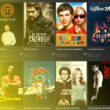Picture juggling. Now, swap the balls for tasks, the act for project management, and you have a day in the life of someone herding action items.
It’s a dance of deadlines and decisions where every step counts.
In the bustling corridors of projects and team dynamics, it’s the action items that often direct the tempo.
Nail these, and you’re not just hitting milestones; you’re crafting legacies. As someone entrenched in the web design sphere, I’ve felt the rhythmic pulse of task tracking tick and tock against the canvas of timelines and sprints.
I’m here to map out a pathway through the chaos—think of it as your backstage pass to orchestrating efficiency. By journey’s end, anticipation will replace anxiety as you learn to wield project management action items like a maestro.
From the elegance of Agile’s flexibility to the steadfast beat of milestone tracking, our exploration will leave no stone unturned.
You’ll emerge with a toolbelt rivaling the most battle-hardened project managers – laden with Gantt charts, collaboration tools, and a keen understanding of task delegation. Let’s dive into the mastery of transforming frantic flurries of to-dos into harmonies of productivity.
Key takeaways
- Task Delegation and Tracking: Action items should be delegated properly to the respective task owners and tracked against due dates to ensure project tasks are completed within the timeline.
- Clear Purpose and Descriptions: Each action item should have a clear purpose and a detailed description to avoid confusion, allowing the assignee to begin work immediately. Supporting documents should be attached for easy reference.
- Feasible Due Dates and Prioritization: Assigning achievable deadlines and prioritizing tasks based on importance and urgency helps maintain a steady workflow and ensures timely completion of project milestones.
- Best Practices for Management: Utilizing project management software, highlighting time-sensitive tasks, using simple terms for clarity, creating intuitive communication channels, and carefully inspecting completed work are best practices for managing action items effectively.
Basic Overview and Definitions
The project management action item list comprises activities and assignees. So, project progress depends on how well the team is at tracking action items. If all goes well, team members will always know what to do next and how much time they have to do it.
Therefore, each action item revolves around a target goal. Together, they form the “to-do list” needed to complete the project. However, a specific task can play a more pivotal role and comprise a key milestone. Therefore, the team must have a complete understanding of all tasks and sub-tasks.
On the other hand, some action items should produce a deliverable. A team meeting can necessitate such a move to ensure a smooth workflow afterward. Yet, some action items may be much simpler, like sending a follow-up email.
Regardless, each link in the chain should have its own action item. That way, the team won’t forget to present the current status in a Gantt chart, for example. So, even if they seem easy, action items hold a lot of value. Failing to cross them off the list in the desired order might lead to project failure.
Main Benefits and Insightful Tips
Overseeing progress warrants following a few best practices to save valuable time. Here are a few pointers for ensuring the entire team is on the same page:
Keep a Tight Schedule
You should never allow due dates to fly under the radar. Instead, the team members should keep a firm grasp on how to clear certain tasks and when. To aid them, try putting the project management action items in detailed meeting notes. At the same time, this will allow even newcomers to follow along.
Set Up Priorities to Direct the Workflow
To ensure your team can deal with roadblocks as soon as they appear, tag each action item by relevance. To do so, you’ll need the know-how to estimate where a bottleneck may arise. Thus, reserve a longer buffer period for the team to find their footing in between.
Demand Accuracy and Responsibility
Project managers should set an example with their work but also expect a lot from their teams. So, once you hone in on the essential to-do items, find the best person for the job. If necessary, make an action items template to divide the sub-tasks quickly.
Develop Momentum When Writing Action Items
As you create action items, ensure to provide clear descriptions as well. This will allow even third-party members to know how to track progress. Also, the rest of your team will have an accurate notion of the items’ due dates. That means they could orient better and avoid unnecessary work.
Estimate the Optimal Completion Time
A number of pitfalls may stay in the way of a project path. However, having a clear action plan may allow you to deduce where things will start slowing down. Then, you can track the status reports and re-adjust a deadline to create more space for your team. Similarly, you can track how long the team took to deal with a particular task.
Are you looking for a great project management app?
Here are our recommendations:
Important Elements and Key Takeaways
In general, an action item has several recognizable aspects. For instance, the task owner, due date, and description.
The Task Owner
The action item’s task owner is the person who needs to perform that part of the project. This also puts them in a position where they’ll need to ensure its timely completion. Knowing that you’ll need to be careful when assigning action items. Otherwise, one failed task may inflict the successor activity as well.
On this note, consider reviewing the team members’ calendars. If you’re dealing with a complex task, look for someone with enough time on their hands. So, don’t rush when putting together a project management action items list.
The Action Item’s Description
Start by ensuring each action item has a clear purpose and justified initial costs. Next, aim for punchy description manuals that leave no room for error. For example, use something like “build resource management plans and send them for review.” This clearly communicates the core of the activity, and the assignee can start as soon as they get the task.
Also, if there are any supporting elements that will aid the task’s completion, remember to attach files. Next, the team member will be able to access all relevant data in one place.
A Step-by-Step Guide
Some action items will refer to a series of activities instead of one. For such cases, it’s best to go more in-depth when summarizing how to complete them. So, the better you explain the optimal path, the better for the whole team.
Assign Feasible Due Dates
Pinpoint the average time needed to complete an action item. Compare it to the related tasks when setting up a timeline. Lastly, assign an achievable deadline for a given task to set the work underway.
For an error-free method, consider using project management software. This will also allow the other departments a full view of the entire timeline. As a result, they’ll deduce how their individual inputs contribute towards project completion.
Best Practices and Optimal Principles
To manage action items, you’ll need a reliable system in place at all times. This doesn’t refer only to the date assigned for each of the project’s legs. Here’s how to help yourself with the project management action items:
Highlight the Time-Sensitive Tasks
Ensure that your team members are aware of which task they should address first. If possible, check their lists of daily tasks to confirm they prioritized them correctly.
Use Simple Terms
To ensure no team member will spend time wondering where to move next, set up clear goals. So, utilize to-the-point description and describe the expected outcome of a given action item.
Create Intuitive Communication Channels
Be prudent when communicating with your team over their usual pain points. If you feel they’re about to face a roadblock, try to resolve the issue beforehand. Providing such a level of support is a great way to push the progress forward.
Carefully Inspect the Completed Work
Once the team finalizes a complex action item, take the time to review their work. Then, try to identify where they performed exceptionally well. Later, use this data to prepare better instructions and replicate the success.
Common Examples of Action Items
After any corporate meeting, the company will have a list of vague goals. This list will soon move into the project manager’s hands. Then, they’ll have to group the tasks and create action items out of them.
This will pave the way for the rest of the team to get busy. Having a clear set of goals leads to the execution phase more naturally. Here’s how to allow for such a development:
- Carefully set a timetable that your team can follow
- Contact any third-party vendors and contractors you can use
- Notify a key stakeholder on when the work will commence
- Optimize the new members’ boarding process
- Regularly issue work orders
- Put the timeline in an intuitive graphic
Common Pitfalls to Avoid
Having an easy-to-follow plan is necessary to complete all action item lists. However, the item’s individual descriptions are equally important for that. Here’s how to ensure your team starts on the right foot:
Thoroughly Explain Each Action Item
Your action plan must devote enough space for each entry. Both your team and the stakeholders will benefit from this. Otherwise, the project’s start will suffer delays, and the higher-ups will often demand explanations.
Do Not Use Approximations
Instead of creating a task that lasts for “two to four weeks,” try to set the deadlines in stone. Being punctual with the due dates is what you’d expect of a team member, after all. Therefore, funnel their attention into a limited timeframe. This will allow you to gauge their progress levels, too.
Properly Utilize the Available Manpower
Not all team members can excel at a given task. Some action items will require a very specific set of skills that you’ll rarely find. So, if there are no volunteers, get to know your team to divide the list of tasks better.
FAQ On Project Management Action Items
What Exactly Are Project Management Action Items?
Action items? Think of them as the engine that propels a project forward – specific tasks assigned during meetings that scream get it done. They’re your green lights on the road to project milestones, stamped with who’s doing what and by when.
How Do I Track Action Items Effectively?
Keep your eyes on the prize. Tracking tools are your new best friends. From Kanban boards to Gantt charts, pick one, and watch it transform chaos into a structured crescendo of checks and balances. Prioritize, set responsible parties, and never let a deadline sneak up on you.
Can Agile Methodology Improve Action Item Management?
Absolutely. If project management were a buffet, Agile methodology would be the chef’s special. It breaks the feast into bite-sized, manageable portions, each with its clear action item. Plus, it’s all about flexibility – do a quick salsa and adapt to changes gracefully. Agile keeps things flowing.
What’s the Role of a Project Manager in Action Item Assignment?
A project manager juggles the task assignment orbs, no sweat. You’re the maestro here, pointing out which sections of the orchestra play next. Assign action items based on skills and workload, and remember, fair distribution makes for a harmonious symphony.
What Techniques Help Prioritize Project Management Action Items?
Picture this: every task is a heartbeat, some more urgent than others. Utilize time management ninja moves to sort ’em by urgency and impact. Can’t beat the Critical Path Method for those high-stakes projects, and the Eisenhower Matrix? That’s like your project’s personal sorting hat.
How Do Stakeholders Influence Action Items?
Stakeholders are like gravity – they keep your project grounded. Their needs and expectations set the course, so keep your stakeholder communication lines open and active. They’ll help steer the ship and approve the compass direction of your project lifecycle.
What’s the Best Way to Communicate Action Items to a Team?
Clear and crisp, like a fresh leaf on a calm morning. Dip into that bag of collaboration and team dynamics tools. Whether it’s a team collaboration tool or a straight-up face-to-face, make sure your delivery’s so spot-on, it leaves zero room for misunderstandpastels.
How Do You Ensure Team Members Follow Through on Action Items?
Trust but verify with a sprinkle of motivation. Set up a progress tracking system – could be high-tech software or a simple chart on the wall. The pint? Visibility. Have regular check-ins, shoot those status updates, and be a cheerleader for your team’s wins.
What’s the Best Way to Handle Incomplete Action Items?
Don’t sweep them under the rug; they’ll just collect dust. Take a breath, reassess the importance, and reassign if needed. Sometimes, the timeline needs a stretch, or the resources – a beef-up. Key is adaptability – keep your project documentation handy to trace the footprints and decisions.
How Can Project Management Software Aid in Managing Action Items?
This digital toolkit is like having a wizard by your side – it can streamline, simplify, and spell out the complexities in your project manager responsibilities.
Harness the power of task management software and watch your action items fall into a snappy, orderly march, all while you keep an eye on the horizon with real-time performance reporting.
Conclusion
So, we’ve journeyed through the maze of project management action items, threading our path with purpose. They’re anchors, really, tethering ideas to reality, mobilizing pixels and code into living, breathing web experiences.
Alright, quick recap:
- We’ve caroused through task delegation like it’s our day job (because, it kinda is).
- Sprinted past Agile methodologies and Scrum meetings with the finesse of a gazelle.
- Pinned down milestone tracking and progress reporting – nothing escapes our keen gaze.
If each line of code were a step, consider these action items your dance card. They’re not just tasks; they’re the swing and sway of productivity, the rhythm pulsing beneath our project’s heartbeat.
Embrace your newfound savvy. Now, when task assignments and deadlines approach, you’ll wield the Gantt charts and collaboration tools with the ease of a seasoned choreographer. Let’s make those to-do lists sing – with every checkmark, you’re not just designing, you’re orchestrating greatness.
If you liked this article about project management action items, you should check out this article about challenges in project management.
There are also similar articles discussing what is PV in project management, project management code of ethics, project ideas for project management, and iterative project management.
And let’s not forget about articles on project management decision log, project management for sales, project management forecasting, project management benchmarking, and operations management vs project management.
- Design’s Descent: What Happened to Fab? - April 19, 2024
- Design Basics: iPhone App Icon Size Requirements - April 19, 2024
- Quick Guide For Developing Mobile Games - April 18, 2024











